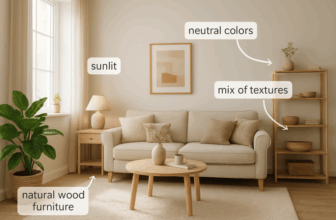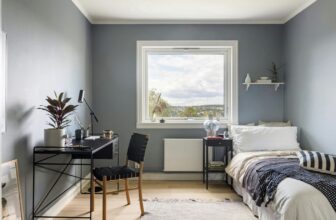
Designing Affordable Homes With Style
Designing an affordable home that feels stylish, functional, and welcoming doesn’t have to be an impossible dream. While affordability and aesthetics may seem at odds, the key to creating a home that meets both goals lies in thoughtful design choices, efficient use of space, and a focus on materials and furnishings that deliver high impact without high cost. Whether you’re working with a compact apartment or a modest single-family house, the process of transforming a budget-conscious home into a stylish sanctuary begins with strategy, creativity, and intention.
This article explores how homeowners and renters can achieve beautiful, affordable spaces by rethinking design priorities, embracing simplicity, and maximizing every inch of their living environment.
1. Start With Purposeful Planning
Every successful design project—no matter the budget—begins with a clear plan. Affordable homes often come with limitations in size, layout, or materials, but these constraints can become creative opportunities. Before buying new furniture or painting walls, start by understanding your space and how it serves your lifestyle.
Create a layout that prioritizes movement and function. Identify the rooms or zones where you spend the most time and focus your resources there. For example, investing in a comfortable, durable sofa for the living room may offer more long-term value than splurging on décor pieces that serve little purpose. Similarly, in smaller homes, multifunctional furniture—like storage ottomans, foldable dining tables, and sleeper sofas—helps optimize space while keeping interiors clean and uncluttered.
The planning stage is also the best time to establish a realistic budget. Define where to save and where to spend. Durable flooring, quality lighting, and proper insulation may cost more initially but will save money in maintenance and energy efficiency over time.
2. Embrace the Power of Color and Light
Color and light are two of the most affordable tools for transforming a home. A fresh coat of paint can completely alter the perception of space, making small rooms feel more open or giving dull interiors a sense of warmth and personality.
Light, neutral colors such as whites, beiges, or pale grays help reflect natural light and create an airy atmosphere. However, don’t shy away from using accent walls or colorful furnishings to introduce personality. A single bold hue in the right place—perhaps on a door, piece of furniture, or wall art—can elevate an otherwise simple room into something memorable.
Natural light should be maximized wherever possible. Keep window treatments minimal, opting for sheer curtains or blinds that allow daylight to filter in. For spaces that lack natural light, layer artificial lighting with intention: ambient lighting for general illumination, task lighting for function (like desk or kitchen lights), and accent lighting to highlight art or architectural features.
3. Reimagine Affordable Materials
Designing on a budget doesn’t mean settling for low-quality finishes. Many modern materials offer the look and feel of luxury without the price tag. Laminate and vinyl flooring, for instance, can mimic hardwood or stone at a fraction of the cost. Similarly, engineered wood furniture can provide durability and visual appeal while remaining cost-effective.
Reclaimed and repurposed materials are another sustainable and affordable option. Upcycled furniture, salvaged wood, or vintage fixtures bring character and authenticity to interiors while promoting eco-friendly living. Shopping locally or browsing secondhand marketplaces often yields high-quality pieces that simply need a little care or creativity to shine.
DIY projects also play a major role in affordable home design. With a bit of effort, homeowners can repaint cabinets, refinish old furniture, or create custom shelving—all of which add personality while saving money.
4. Make Small Spaces Feel Spacious
Affordable homes are often compact, but good design can make even the smallest spaces feel comfortable and expansive. The key lies in visual openness, smart storage, and flexible layouts.
Start by reducing clutter. Adopting a minimalist approach not only enhances aesthetics but also improves livability. Open shelving, hidden storage compartments, and modular furniture help maintain organization without crowding the space.
Mirrors are another powerful design tool for small homes. Placing a large mirror opposite a window amplifies light and creates the illusion of depth. Similarly, glass tables, lightweight chairs, and slim-profile furniture maintain visual flow, preventing rooms from feeling boxed in.
When possible, create continuity between spaces. Using consistent flooring and color palettes throughout a home helps unify rooms and make the overall layout appear larger. Even small design decisions, such as matching door handles or choosing uniform trim colors, contribute to a cohesive and elevated look.
5. Incorporate Sustainable and Energy-Efficient Design
Sustainability and affordability often go hand in hand. Energy-efficient design not only benefits the planet but also reduces long-term costs. Simple adjustments—like installing LED lighting, using energy-efficient appliances, or improving insulation—can make a noticeable difference in monthly expenses.
For homeowners designing new builds or renovating existing structures, consider passive design principles. Positioning windows to maximize natural ventilation, using reflective roof materials, and incorporating shading elements like awnings or trees all help regulate indoor temperature naturally.
Indoor plants can also serve both aesthetic and environmental purposes. They improve air quality, add color, and bring a sense of calm to interior spaces—often for very little cost. Even a small windowsill garden of herbs can enhance both design and daily living.
6. Affordable Furniture With Character
The furniture you choose defines both the comfort and style of your home. Affordable options don’t have to mean generic or low-quality. Many budget-friendly pieces offer timeless design, particularly those that emphasize clean lines and functionality. Scandinavian-inspired or mid-century modern furniture styles, for instance, tend to blend simplicity and practicality beautifully.
Thrift stores, estate sales, and online marketplaces often hold treasures that can be refreshed with a bit of imagination. A solid-wood dresser might just need sanding and a coat of paint to feel brand new. Reupholstering a chair or adding new hardware to cabinets are other small upgrades that deliver significant impact.
Layering textures—such as combining linen, wood, and metal—adds sophistication to affordable interiors. A mix of tactile materials gives even simple spaces a curated feel.
7. Designing for Comfort and Well-Being
Affordable housing design isn’t just about aesthetics; it’s about fostering comfort, dignity, and emotional well-being. A well-designed home provides its occupants with a sense of pride and belonging.
Personalization is essential. Family photos, handmade crafts, and souvenirs bring warmth and authenticity. Incorporating scents, soft lighting, and natural materials can make a space feel nurturing and restorative. Even in small apartments or budget homes, it’s possible to create zones that encourage relaxation—like a cozy reading corner or a small balcony garden.

Good design also considers accessibility and adaptability. Thoughtful layout planning ensures that spaces remain comfortable for all ages and physical abilities, increasing the home’s long-term usability.
8. Access to Affordable Housing Resources
For those seeking affordable homes or assistance programs, there are many resources available to make the process easier. Government-backed housing programs, nonprofit organizations, and online databases can connect individuals with affordable rental options or homeownership opportunities in their area.
One particularly useful resource for renters is the ability to search Section 8 listings, where eligible individuals can explore housing options that meet their needs while staying within budget. Access to this kind of information helps families find stable, safe housing while focusing on creating a home that reflects their taste and personality.
9. Balancing Style and Affordability
At its core, affordable design is about balance—between creativity and practicality, aesthetics and economics. The most successful affordable homes are those that align beauty with purpose. Instead of chasing trends, focus on timeless design principles: functionality, harmony, and authenticity.
Good design doesn’t depend on expensive finishes or brand-name décor. It depends on making choices that reflect who you are and how you live. Whether through clever use of space, thoughtful color choices, or sustainable materials, affordable homes can be just as stylish and inspiring as luxury ones.
Conclusion
Designing affordable homes with style is not only achievable—it’s a movement redefining how we think about housing. By prioritizing creativity over consumption and sustainability over excess, anyone can create a beautiful, functional, and comfortable living space that fits their budget.
With the right mindset and resources, affordable design becomes more than just a financial necessity—it becomes a pathway to empowerment, individuality, and lasting comfort.




